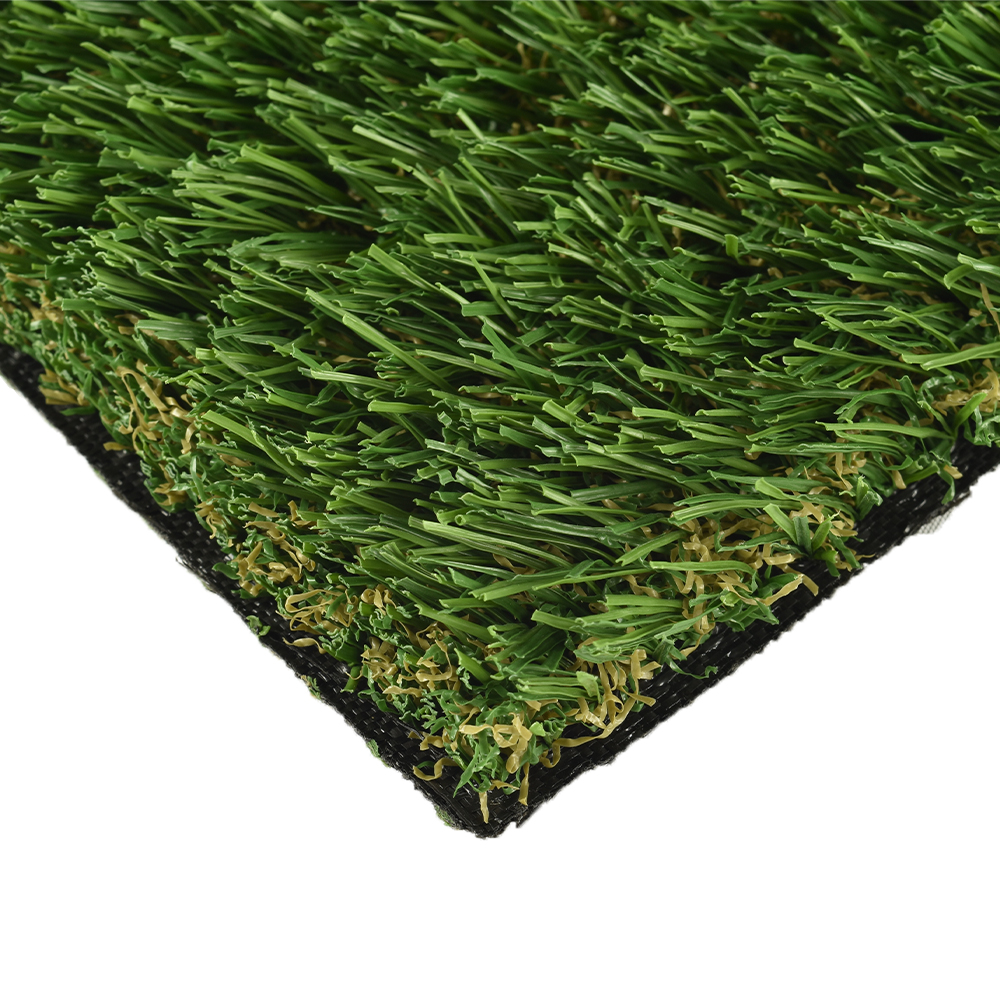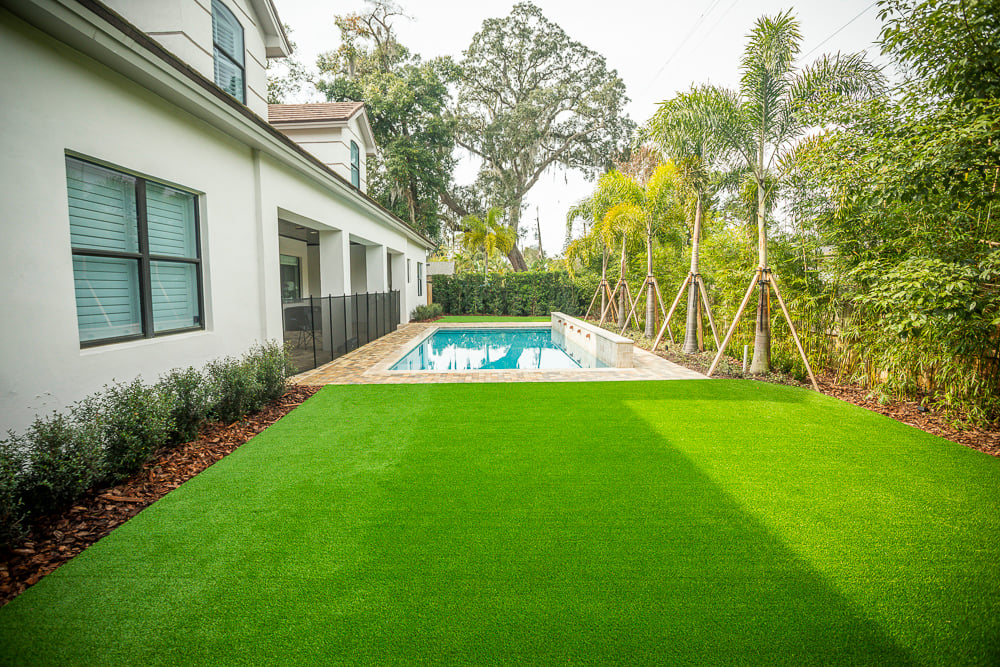See Why Homeowners Prefer Synthetic Grass for Sustainable Landscaping Practices
As home owners increasingly prioritize sustainability in landscape design, fabricated turf has arised as a compelling choice to standard grass. Its ability to conserve water, lower maintenance initiatives, and reduce environmental impact placements it as a functional selection for those seeking environmentally friendly remedies. Moreover, the aesthetic allure and versatility of synthetic grass deal with diverse design choices. However, the effects of this shift extend past plain ease and aesthetic appeals, prompting a more detailed evaluation of just how these choices affect wider environmental results. What continues to be to be discovered is the complete scope of advantages that synthetic grass can use to house owners and the environment alike.
Water Conservation Perks
One of the most considerable benefits of man-made grass is its role in water preservation. In contrast, man-made lawn removes this need completely, as it does not need watering.
Furthermore, the setup of man-made lawn can add to a much more lasting landscape. Home owners can substantially decrease their water expenses, permitting reallocation of resources to various other environmental initiatives or house usages. In addition, synthetic grass is designed to withstand numerous climatic conditions without the demand for additional watering, making it a perfect option for regions dealing with water scarcity.
The ecological benefits prolong past prompt water cost savings. By reducing water intake, synthetic grass aids to minimize the influences of environment modification, preserving essential ecosystems that are endangered by too much water removal. As sustainable landscaping practices gain grip, artificial lawn arises as a liable option for property owners seeking to create eco-friendly outdoor rooms.
Lowered Upkeep Efforts
Synthetic grass significantly minimizes upkeep efforts compared to standard lawn lawns. With man-made grass, homeowners can eliminate the taxing jobs connected with all-natural landscape design, such as mowing, feeding, and weeding. This not just conserves valuable time however likewise decreases physical labor, making yard care easily accessible for people of any ages.
Traditional grass need frequent cutting to keep a cosmetically pleasing height, whereas man-made lawn continues to be constantly rich without the demand for reducing. In addition, homeowners no much longer need to apply pesticides or fertilizers, which are often called for to keep all-natural grass healthy.
In addition, synthetic grass is resilient and long lasting, calling for minimal upkeep beyond occasional cleaning and washing to eliminate particles. This ease of upkeep allows home owners to enjoy their exterior spaces without the continuous fear of upkeep, providing more time for recreation and household tasks. Inevitably, the lowered upkeep initiatives associated with synthetic grass make it an enticing alternative for those looking for a low-maintenance, visually appealing landscape.

Environmental Influence Reduction
There is a growing recognition of the ecological advantages connected with man-made turf, specifically in regards to water conservation and reduced chemical usage. Conventional grass require considerable quantities of water, specifically in drought-prone areas, causing raised strain on local water resources. On the other hand, artificial lawn removes the requirement for watering, substantially minimizing water intake and advertising sustainability.
Furthermore, standard grass upkeep often includes the application of herbicides, pesticides, and fertilizers, which can contribute to soil and water contamination. Synthetic lawn mitigates this ecological risk by needing very little upkeep and essentially removing the need for dangerous chemicals. This not only improves dirt health and wellness yet also shields regional ecosystems from harmful runoff.
Furthermore, the production of all-natural turf yards generally involves making use of fossil fuels for mowing and landscape design equipment, more contributing to greenhouse gas emissions. By picking artificial lawn, house owners can considerably reduce their carbon impact connected with grass treatment activities.
Aesthetic Appeal and Adaptability
Along with its ecological benefits, synthetic grass supplies significant aesthetic allure and versatility for landscaping. Homeowners can achieve a lush, eco-friendly appearance year-round, removing the seasonal changes generally associated with natural grass. This consistent visual not just improves the visual charm of a building however additionally adds to a properly maintained and polished appearance.
In addition, synthetic grass is available in a variety of colors, designs, and structures, permitting customization to informative post suit private choices and design themes - Arizona artificial turf. Whether made use of in property yards, industrial spaces, or recreational locations, it can seamlessly incorporate right into varied landscape design designs, from modern minimal to check rich exotic setups
The versatility of artificial turf expands beyond plain look; it can be installed in different places, including roofs, patios, and also interior rooms, creating opportunities for one-of-a-kind landscaping options. Additionally, it appropriates for a range of tasks, from children's play locations to pet-friendly atmospheres, providing functionality without endangering design.
Inevitably, the visual allure and convenience of artificial turf make it an appealing alternative for property owners seeking lasting landscape design services that do not compromise beauty for environmental responsibility.

Long-Term Expense Savings
One of the most engaging benefits of artificial lawn is its capacity for lasting cost savings. Unlike natural lawn, which needs normal maintenance-- including mowing, watering, feeding, and parasite control-- man-made grass dramatically lowers these ongoing costs.
Additionally, man-made turf has a lifespan of 15 to 25 years, depending upon its top quality and use. This durability lessens substitute prices, making it an extra affordable selection over time. The first investment in synthetic turf can usually be redeemed via the financial savings accumulated over time.
While the in advance expense might appear greater compared to turf installation, the advancing financial savings from reduced maintenance and water use typically outweigh these preliminary expenditures. Inevitably, the fostering of synthetic grass not only advertises a lasting landscaping solution however also provides property owners a financially wise option that straightens with lasting budgeting objectives.
Conclusion
Fabricated grass emerges as a compelling option for sustainable landscape design, providing substantial benefits in water preservation, lowered maintenance efforts, and decreased environmental influence. Its aesthetic allure and flexibility boost the visual landscape while lining up with contemporary sustainability goals. Long-lasting expense financial savings contribute to its good looks for property owners. investigate this site As neighborhoods significantly focus on eco-friendly practices, the fostering of synthetic grass represents a modern step towards achieving sustainable and resilient landscapes.
Additionally, artificial lawn is made to hold up against different weather problems without the need for supplemental watering, making it an optimal option for regions dealing with water scarcity. (Artificial turf companies phoenix)

Man-made grass arises as a compelling option for lasting landscape design, providing substantial benefits in water preservation, reduced upkeep efforts, and diminished environmental influence.